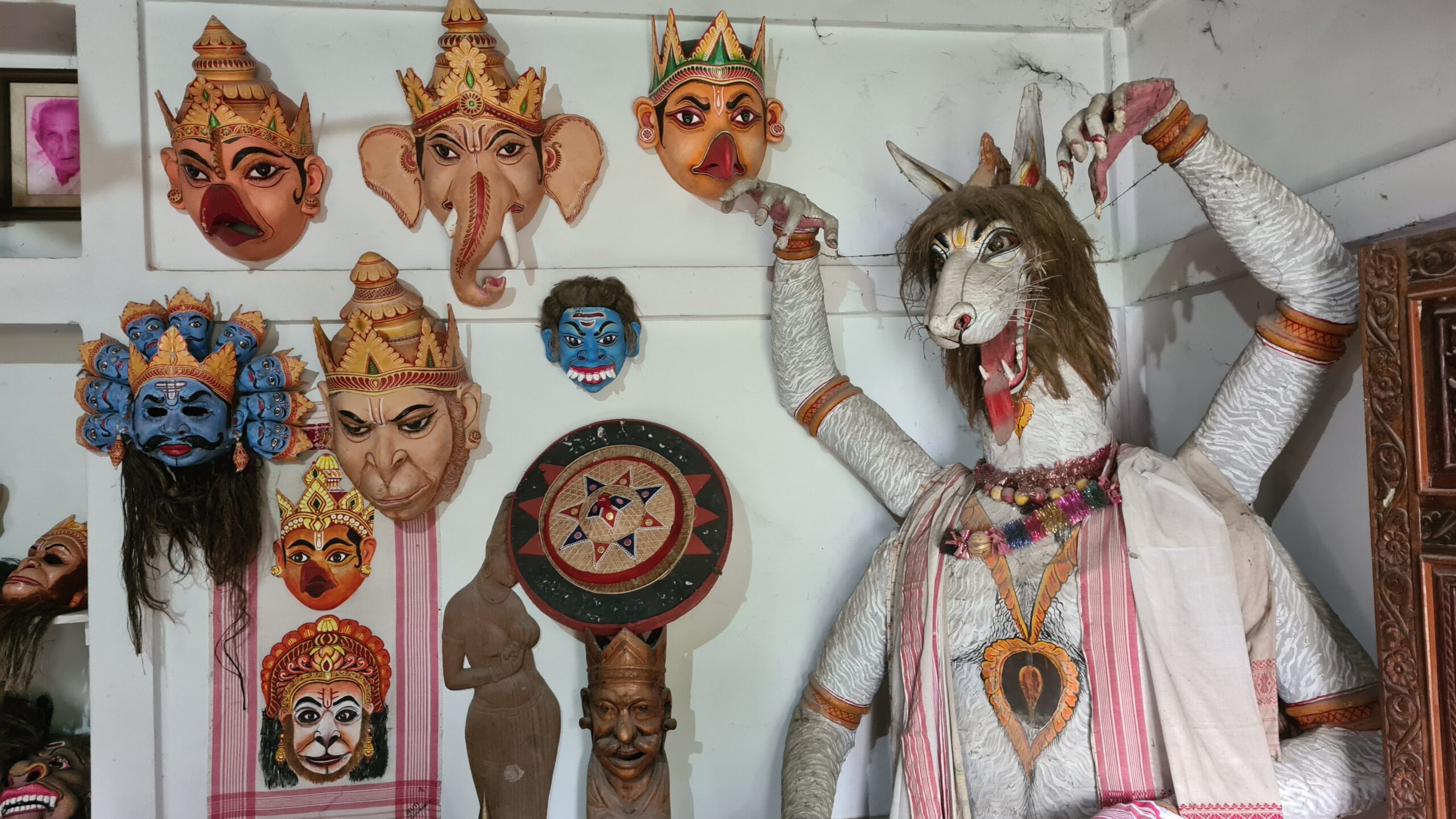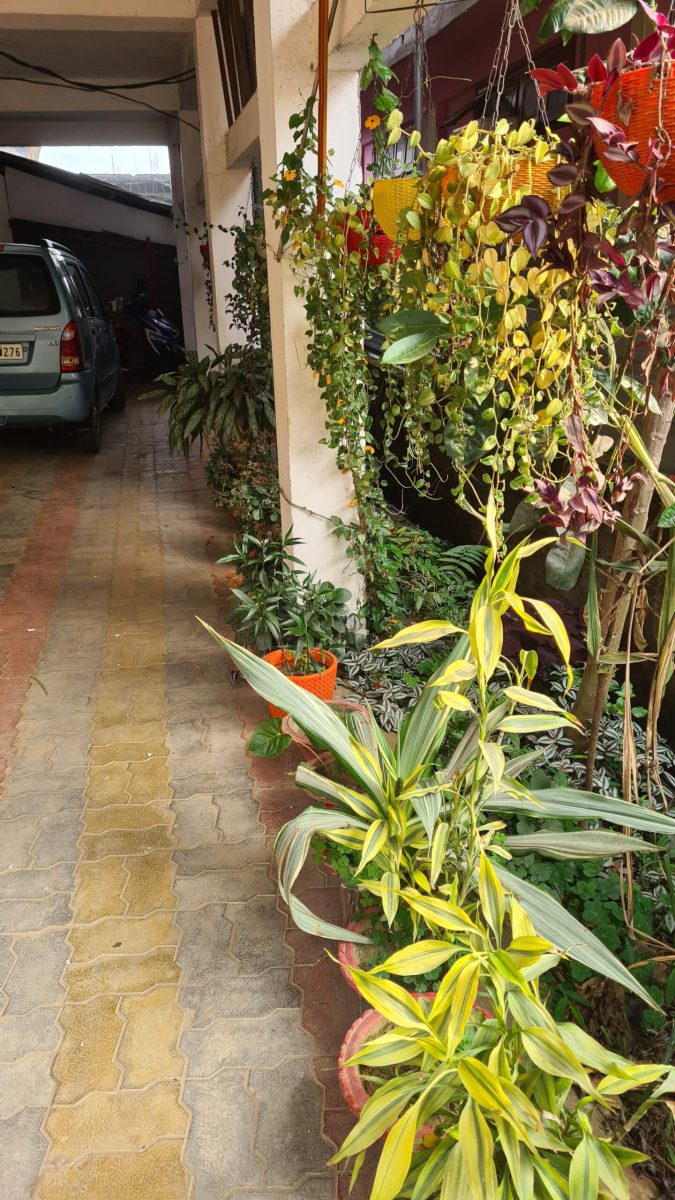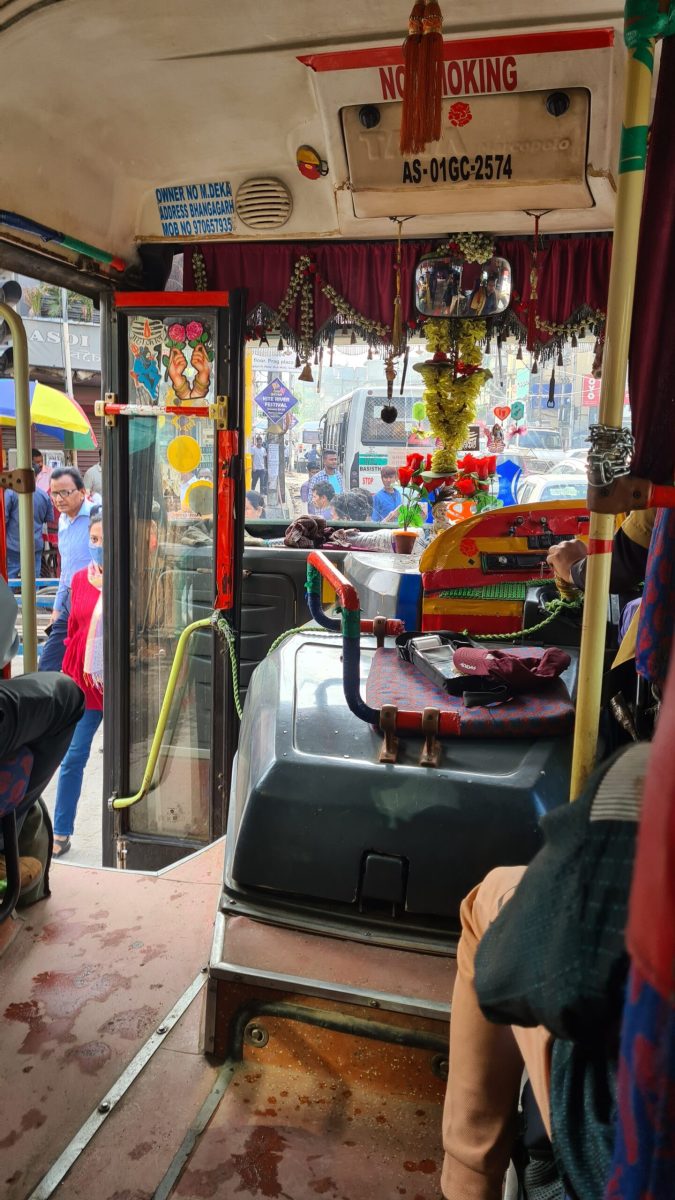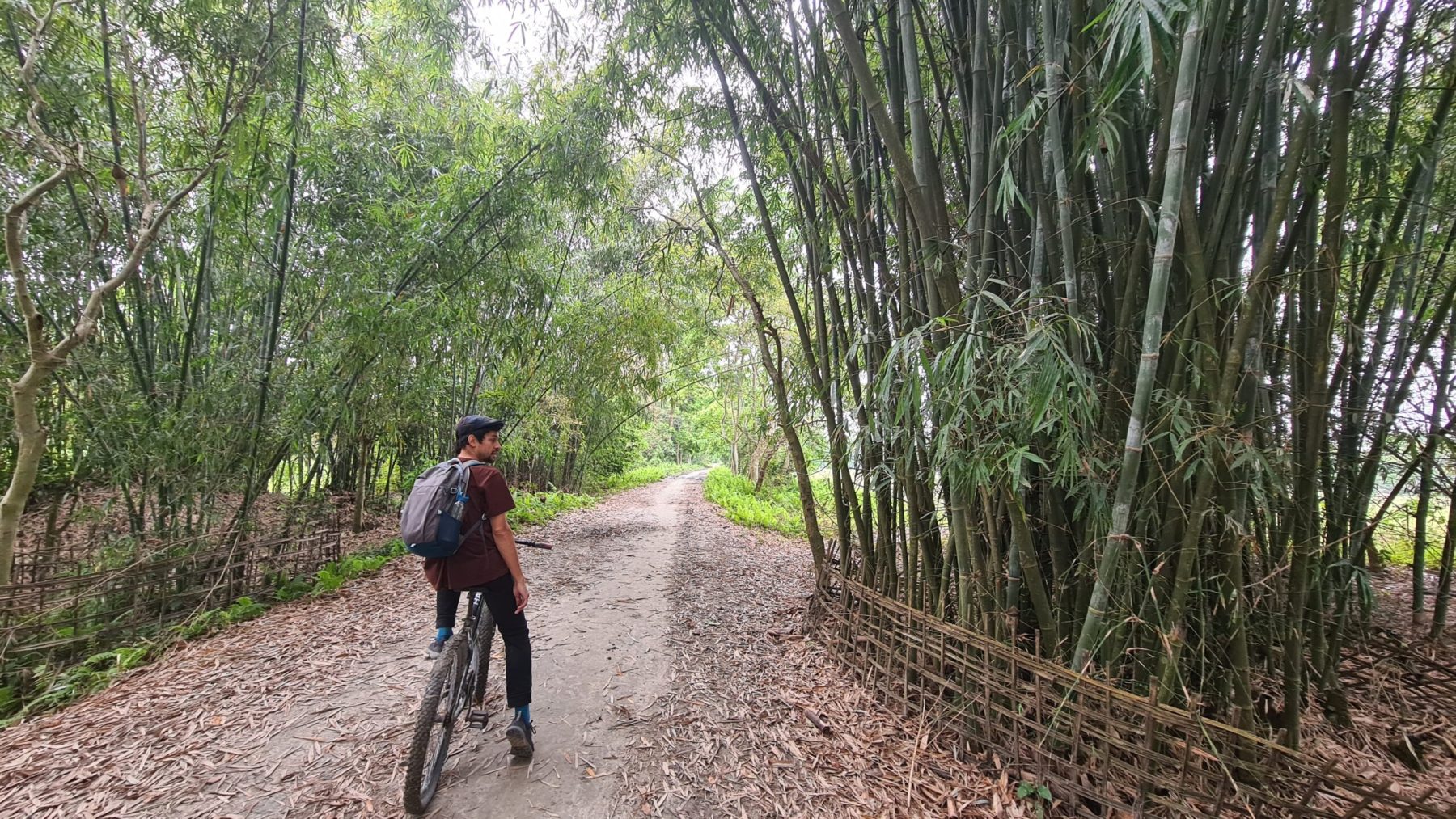So world order has returned and I’m once again writing to you from the rails of India. Before I jump into it, I’ve discovered the chai, or tea to me and you, on offer on the trains is regional – which is quite fun. This train’s chai was black and almost punched a hole in my throat.
I should also provide you all with the mental relief that I am now feeling better – I’m sure all your worrying was costing you sleep. So now rest easy.
Part 1 – Assam and Kaziranga
Following on from my previous blog – I suppose that’s a given really… Anyway Assam! Firstly, the tea here is phenomenal! Interestingly, whereas it’s known as ‘chai’ across the rest of India it’s ‘chaa’ here. Presumably due to the linguistic variety across India. Secondly, tea plants (of which there are loads here) are actually small bushes and collectively some of the most beautiful plants I’ve seen. The new lighter green leaves on top create this two-tone effect across the rolling hills of tea – a stunning sight. Thirdly, the Assamese people are incredibly friendly, but also ethically very different to the rest of India; with far more Tibetan, Nepalese and Bhutanese people/genes. Fourthly, the food here is outstanding, especially in variety (with more influences from the aforementioned cultures) which is very welcome after weeks of purely Indian food.
I’ve had three stand out meals already. My first (likely of many) Assamese Thali (photo included) which was similar to the other thalis I’ve had but with different curries and more vegetables / veg pickles. Then there was the thenthuk I mentioned in my last blog. And best of all was some awesome Assamese home cooking. Filip (now spelt correctly) and I were staying in a homestay in Jorhat, the owner offered us dinner for 100 rupees each – which turned out to be the best investment I’ve made in a long time. We got a flavourful but simple dahl, along with three dry veg side dishes served with rice. Every component was simple but tasty, and it was so nice to eat some food that really felt healthy. Given the incredible performance at dinner we also booked in for breakfast tomorrow before we headed to the island north of here. Majuli, the island we’re heading to, is very culturally isolated, and represents a close (or closer at least) representation of traditional Assamese culture. But more on Majuli later.
We’ve just come from Kaziranga, well more specifically the Kaziranga National Park. Home to 70% of the One Horned Rhino population. We took a jeep safari around the park observing the various wildlife. We paid for two hours but got around three which was pretty great. Within the park we saw all sorts of treats; three or four types of deer (swamp and hog to name two), water buffalo both in and out of the water, a few elephants in the wild, king fishers (both the classic colourful ones and striking black and white ones), cormorants, and loads of eagles. Oh and of course we did see a few rhinos as well! The only large animal we missed were tigers which I think I’m pretty happy about – at least I’m glad we didn’t see any up close. I think we paid around £17 each so it was an absolute bargain if you ask me (well Filip paid a little less as an Indian national).
Even without the animals, just a drive around the lovely park would have been nice. I did feel underprepared in the camera department upon seeing the locals with their huge telephoto lenes, and even compared to Filip’s DSLR and zoom lens. Fortunately the jeep had a pair of binoculars which I used as a makeshift zoom lens for my phone – it wasn’t easy but I made it work. The circular shots are taken with my phone/binoculars combo, the arguably much clearer and square photos are Filip’s shots.
We then had the experience of getting a bus from Kaziranga to Jorhat. So there are a mix of government and private buses across india. The government ones are best but sometimes uncommon. And buses work a bit differently here, the first step is finding the bus stop (which is never marked) once there, you then flag down the buses as they come. You then shout where you want to go to the ‘conductor’ or typically the guy hanging out the side, who shouts where the bus is going back. If you get a match – happy days! These buses vary from minivans to coaches, and in my experience they ram more people in the minivans than the full-sized coaches. The first bus that stopped was a minivan, it was heading the right way, the guy put our bags in the boot and then we tried to get on there was literally no room. There were people in every seat, down the aisle, on the dash – everywhere. When we protested, he then started to try to get people to give their seats to us which Filip led the charge on refusing. We got our bags and waited for the next one. Where once again Filip stepped up to the plate haggling. They wanted 300 Rs, Filip said too much. The conductor said fine and the bus went on. The bus then stopped 10 metres down the road and 150 Rs was agreed. We both got a seat for the two hour journey – a mostly comfortable ride.
Part 2 – further explorations of public transport
I think it’s worth saying here, my ambition to leave the larger cities and spend more time rurally is great once you’re there. It’s the getting there bit that can be tricky. I also suspect with my current heading it’s only going to get harder.
After a night in Jorhat, a fairly unremarkable but pleasant city (apart from the homestay’s dinner which again was exceptional), we faced with another early start and the quest of getting to Majuli – a multi-medium affair. Starting with a short walk in search of a shared ‘Tempo’ to take us the 30 kms to Nimiti Ghat (Ghat meaning dock). Once we found the tempos, all going to various places we eventually found the one heading to our ghat and were the first to board. The tempos are very mini mini-vans with a front and back facing bench style seat in the main compartment, and then a smaller bench placed in the boot. The tempos only leave when they are full, so being first gives you your choice of seat but does mean you’ll be waiting while the driver finds the remaining passengers (primarily by shouting “Nimiti!?” at passers-by). We eventually set off around 30 mins later but slowly still trying to fill the remaining seats. The tempos can hold four on either main bench, two or three in the rear bench, and two in the passenger seat at the front. Fortunately we never reached full capacity. All in all, not bad for 50 Rs (50p).
When at the Ghat we bought our tickets from the ticket booth. A further 30 rupees for the 1hr ferry ride. The price list for the ferry was hilarious. Passenger – 30 Rs; bicycle – 20 Rs; mo-ped with rider 60 Rs; auto rickshaw (ie tuktuk) with driver 120 Rs; pig 30 Rs, and goat 30 Rs. Sadly no goats or pigs joined us for the crossing but the ferry was still busy filled with cargo, passengers, and heaps of motorcycles.
Now on the Island of Majuli, it was time for another shared tempo. Again fortunately this one didn’t fill up to capacity but took us the final leg for a final 30 Rs. So a total of £1.10 for two taxis and a ferry – I didn’t think that was bad. Perhaps not the most comfortable journey I’ve had, but a mini-adventure in itself.
All of the buildings in Majuli are built on stilts including the bamboo hut complex we’re calling home for the next couple of days. While basic our room is nice, although we have a grand total of one plug socket and no wifi… First world problems. But the owner is lovely and we’re only about a five minute walk into the central market.
Part 3 – exploring Majuli
Majuli is perhaps the largest river island in the world, however it’s been rapidly decreasing in size. At the beginning of the 1900s it was c1,200 km2 however today it’s shy of 400 km2. A drastic reduction owing to erosion. A fact that doesn’t seem to trouble locals, with several construction projects on-going. While much smaller than before, the island is still sizable to travel around. Our solution was to rent a couple of bikes. Which were relatively successful, we took them out for a c20km ride stopping off at various points.
We took them initially to the white sand beaches on the river bank, and then crossed an incredibly rickety 30m bamboo bridge across the river. Incurring a 20 Rs toll. Despite my significant doubts the bridge held. And maybe more impressively so did my nerve, managing to keep the bike on the bridge and not focusing on the fact you could see straight through the bamboo lattices and struts forming the bridge.
We passed through many small villages, with some incredibly friendly kids who loved to say (or shout) hello upon sighting us. All of the buildings continued to be built on stilts to avoid the flooding in monsoon season. The villages were separated by fields of rice, some other crops, or fields full of assorted grazing animals. Wooded areas were littered with bamboo plants towering above and suffocating the trees themselves. Farmers tended to their crops, with rice plants seemingly needing individual attention, and we also passed a large herd of water buffalo without getting impaled on their large horns – success!
While an absolutely lovely day – our arses felt the pain from the bikes’ robust seats and Majuli’s dirt roads. Our plan was to take the bikes out again the next day on a much longer tour of the island’s Satras (monasteries) which are famous for mask making, however we’ve decided the bikes aren’t suitable and have opted to rent a scooter (or scooty as they call them) instead.
With the bikes returned and the scooty in our possession, obtained without a deposit or any paperwork or any questions at all, our second day exploring the island began. Filip started the driving, but much to the despair of the Island’s poultry population*, we swapped throughout the day.
*For reference, while in Vietnam a few years ago I inadvertently ran over a chicken on a motorbike…The chicken was fine! But I’ll never forget the audible gasp from the locals.
Driving around the island on the much more comfortable scooter was a delight! We managed to see the vast majority of the island, including the famous mask making Satra. The mask making tradition dates back over 500 years on the island. The process of making them starts with bamboo frames in the rough shape of the mask, then a cotton layer is attached forming a kind of skin, followed by a layer of cow dung, a further layer of cotton, and finally the masks are painted – before use in theatrical performances typically reenacting Hindu scripture.
Also interestingly, the Island, while Hindu, follows a mono-theologist version of Hinduism only believing in Vishnu. Disregarding the other deities such as Ganash and Krisna etc. I meant to get to the bottom of why but I didn’t manage that. We did quickly discover however as the island is considered holy it’s a dry state. However, our new friend we met in the shared tempo from the ferry to our bamboo hut, “knew a place.” So both nights we had a drink before dinner. The first night I had an overly cold kingfisher – overly cold meaning completely frozen… The second night however, we opted to try the local moonshine of rice beer. I’ll include a photo but it was weird! Not terrible somewhat close to alcoholic milk??
With our stay in Majuli complete it was time to make the return trip. Which simply followed the reverse route; shared tempo, ferry, then shared tempo again. The final shared tempo was an experience. This time the tempo was already half full, Filip and I were ushered into the boot on a small stool each and bags in and around us. In total 18 people got into the minivan, and one extra was hanging off the side. I was quite glad to be in the boot to be honest. But it got us there broadly safely and made for a good selfie.
Which brings you guys up to date. I’m now heading back to Guwahati to then head south to the forest in search of some pretty spectacular sights.





Another really interesting insight Hugo, into Indian life, and maybe context for our, as you say, 1st world problems. Getting the K3 won’t be so bad in future (although I am going to try yelling at the driver where I want to go and see what they say). It looks like our London city slicker son, is maybe more of a country boy at heart. Seriously though, it is great to see how other people live and the values they have, regardless of wealth and possessions. Loving the blog. Take care. Dad
Love rhe additional detail on rhe map too.
Yeah the K3 is kinda great – aircon, tap payment, on a schedule – its got a lot going for it. But not sure about the country boy bit, although it is lovely here
Hugo, I love the new functionality on the map. Being able to expand the map to very high detail and then drop the figure right at your exact locations and see it in 360 degree detail is fantastic. Goodness knows how the photographers take those images.
Hi Hugo great to see updated map and your great adventures, the new shoots on tea plants when picked are called the first flush most expensive tea. Great to hear you are see loads of wildlife the black and white kingfisher is called pied kingfisher. Your mum & dad are still with us in Tenerife . Stay safe enjoy yourself
Thanks Terry! Ive actually just yesterday been to a tew factory do have learnt about the various flushes. The next blog, as a result, may be a bit boring for you!
And thanks also on the Pied KF. Ill tell people that the bext time we see one!